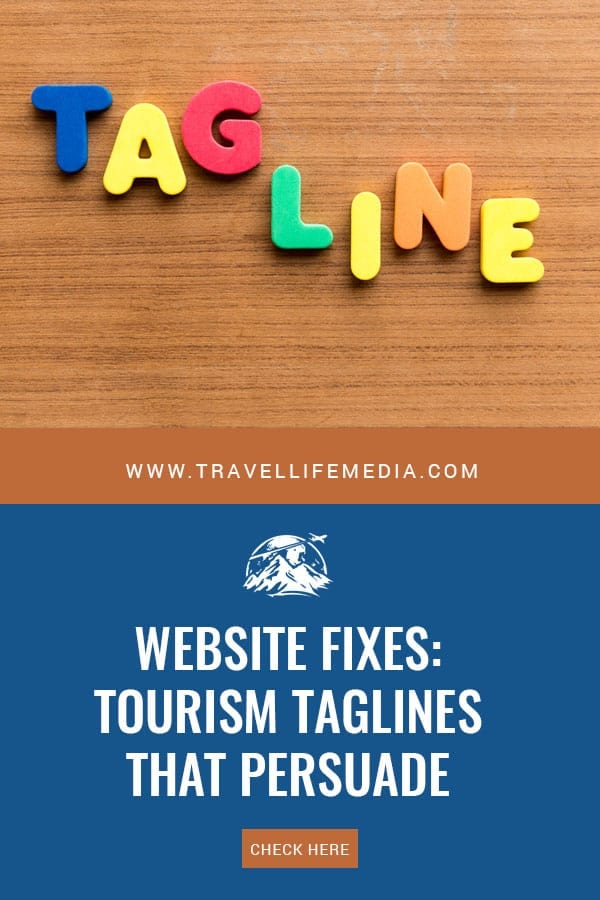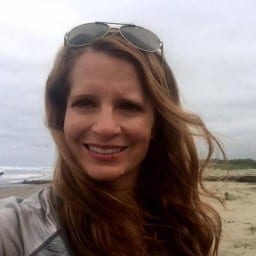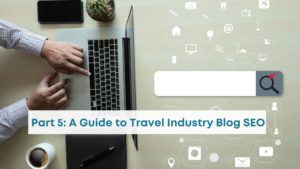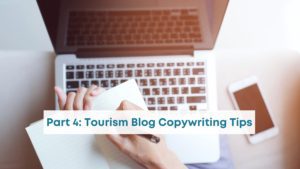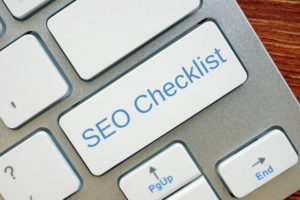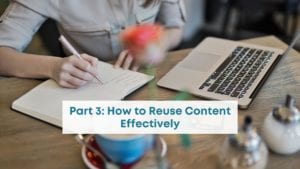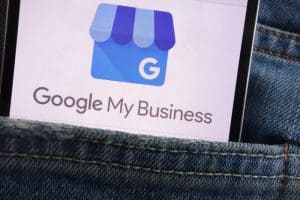Taglines –your main website headline – can turn your homepage into an immensely powerful piece of communication, and it can result in the difference between someone moving off your website quickly — to someone who stays on it to read more.
Taglines are website fixes that can quickly improve your website’s first impression and let the reader know they have landed in the right place. This tip is one of many copywriting tips that can help you make small and noticeable improvements to your brand.
This article will help you:
-Avoid creating a dull, drab, and generic taglines
-Craft your persuasive tagline for your tourism business with a formula
-See examples of tourism taglines in the industry
Don’t Stop at Telling Your Reader Only WHAT You Do.
Most tourism business websites have one line on their homepage that says what their company does. That is it.
Although this is very necessary, this approach has one big problem.
It doesn’t speak directly to your audience – its more about you than about them – the customer you want to persuade and entice to your business.
I call this your ‘What’ statement because it really just does that; it says what you do.
Here are examples of boring and internally focused taglines
Examples:
-Private and day tours in France
-Boutique Hotel in San Francisco
or
-Airport Transport in London
Sure, these examples clearly say what the company does, but they aren’t at all inspiring, motivating, or persuasive for any reader to press the book now button.
A motivating, persuasive tagline can do the following:
- It speaks directly to your target audience.
- It summarizes your overall value to your target guest.
- It can also include your purpose; which is often implied.
- It can share something highly relevant and emotional to your target guest. (an insight)
- It says what you do. (often this works well in a subline)
- It can be humorous, serious, or inspirational, and it MUST fit your brand’s voice.
- It includes a keyword to help with SEO purposes.
- Ideally, it is 3-6 words but can still be effective if its a little longer.
The reader reaction you strive to achieve with your tagline is:
Wow, this brand is talking to me – I want to read on!
Important note: Developing taglines isn’t easy- however there is a formula where you can start.
There is a reason why advertisers spend lots of time and energy on a tagline, and it does take time and skill, especially to get it to achieve all of the above points. We do want a great tagline but your aren’t going to have the next “Nike Just Do It” here — also because they spent millions of dollars to solidify their message. However we can make something clear, compelling and persuasive.
You can still have a successful tagline without achieving all of the 8 points above however, these criteria improves your chances. You can only do it if you get feedback from your target audience.
Good news! There is a formula that can help you develop your tagline easily – Start there and work towards developing your own.
How to build tourism taglines – website headline
Here is one proven and effective way to craft your tagline that ensures you have included the necessary information. This process helps organize your key points into a cohesive tagline statement. This methodology is originally taken from the Copy Cure , and I’ve used this method/with a few changes time and time again with clients in the tourism industry.
Key tip:
Your tagline is about you – yes – but more importantly, it is ABOUT YOUR TARGET AUDIENCE. When travelers read your website, they are thinking: “What’s In It for me?”
To develop your own tagline, here is a short working session to help.
Write this in a workbook, or word document because you will refer back to these steps as you work through your own tagline.
Step 1: Identify your Ideal/Target Guest
The more focused you are with your target audience, the better you can speak to them directly.
For example:
- Baby boomers
- Responsible (or Sustainable) travelers
- Solo female travelers
- Travelers who hate big groups tours
- Beach lovers and sun worshipers
- Remote working travelers
- Families with small kids
- London business travelers
- Adventurous travelers
- Adrenaline enthusiasts
- History buffs
- Foodies
- Using “you” can be a way to talk directly to your audience if it becomes challenging to describe your traveler in a few words, but it may not be as direct or effective.
What would you call your ideal target audience in a few words?
Brainstorm some options to come up with your target guest explanation. Note that these are just examples – and think of others that are unique to your business.
Step 2: What are your Target Guests’ Needs?
Think about them, what they want, and what benefits you can give them.
(Not your features, because those are not needs-driven, and generic)
Examples:
- To travel safely and adventurously
- To contribute to social causes
- To have non-stop active adventures
- To travel comfortably with all the comforts of home
- To travel luxuriously, on a budget
- To have all your travel planning taken care of
- To experience the local culture
- To travel, live and work in a comfortable, safe, and fun environment
Step 3: Think about the outcome or purpose your target guests want.
what do they want to get out of this – not the benefit but the satisfaction of it.
Examples:
- To enjoy the experience of a lifetime
- To learn about the impact of climate change
- To discover the world from a local perspective
- To give back and volunteer in a foreign country
- To take great Instagram photos
- To learn everything there is to know about Italian food
- To feel relaxed and recharged
STEP 4: What does your business do specifically? (what is your vehicle)
Examples:
- Walking tours in Madrid
- Accommodation and Tours in Cuzco, Peru
- Eco-cabins in Colombia
- Cooking classes in Tuscany
- Electric Bike tours in Portland
- Transportation in the Algarve in Portugal
- Community-based tours in the Maldives
STEP 5: Write your draft taglines using the information from Step 1-4
Once you work through step 1-4 you are ready to start developing some draft tourism taglines (headlines)
Ideal structures to design your tagline and sub-headline
Option 1: Helping [Target Guest] to [Meet their needs]
In this version of a tagline use your examples from Step 1 and add it with Step 2
Examples:
- Helping solo female travelers travel safely and adventurously
- Helping responsible travelers contribute to social causes
- Helping London Business Travelers have all their travel planning needs taken care of
- *You* can also be used as a way to talk to your audience as the rest of the line is relevant to your target audience.
Then you can input a secondary line from Step 4
Example: Helping solo female travelers travel safely and adventurously
Tours and accommodation in Cuzco Peru
OPTION 2: For [Target Guest] who want/dream/wish/need [Desired Outcome]
In this structure you take step 1, add it with Step 3 copy you developed
Examples:
- For solo female travelers to feel relaxed and recharged
- For Foodies who want to learn everything there is to know about Italian food.
- For Baby boomers who want to give back and volunteer in a foreign country
OPTION 3: [Vehicle] for [Outcome] or flip [Outcome] and [Vehicle]
In this structure, you take Step 3 and add it with Step 4 or flip it around
Examples:
- The walking tour in Madrid where you can take the best Instagram photos
- Community-based tours in the Maldives to discover the world from a local perspective
- Feel relaxed and recharged by staying in our eco-cabins in Colombia
- Cooking classes in Tuscany to learn everything about Italian food
*See how I took Step 4 Vehicle – and married it with Step 3 the outcome?
OPTION 4: Where – with an [Outcome]
In this structure, you take Step 3 and use “Where” at the beginning of the line.
Examples:
- Where you will have an experience of a lifetime
- Where you can travel safely
- Where you can give back and volunteer in a foreign country
- Where you can discover the world from a local perspective
If you use this format you will want a secondary line that explains what you do (from Step 4)
OPTION 5: Where [Target Guest] [Achieves an Outcome]
Here, you put together Step 1 with Step 3
Examples:
- Where remote working travelers can live, travel and work in a comfortable, safe, and fun environment
- Where families with small kids can feel relaxed and recharged.
- Where adventurous travelers can contribute to social causes.
If you use this format you will want a secondary line that explains what you do (from Step 4)
Now that you have five potential ways to create a more engaging, target audience centered tourism taglines, here are some examples from the industry who are using these structures or versions of these structures.
Great examples of tourism taglines in the industry
Example #1 Intrepid Travel – Small Group Tours
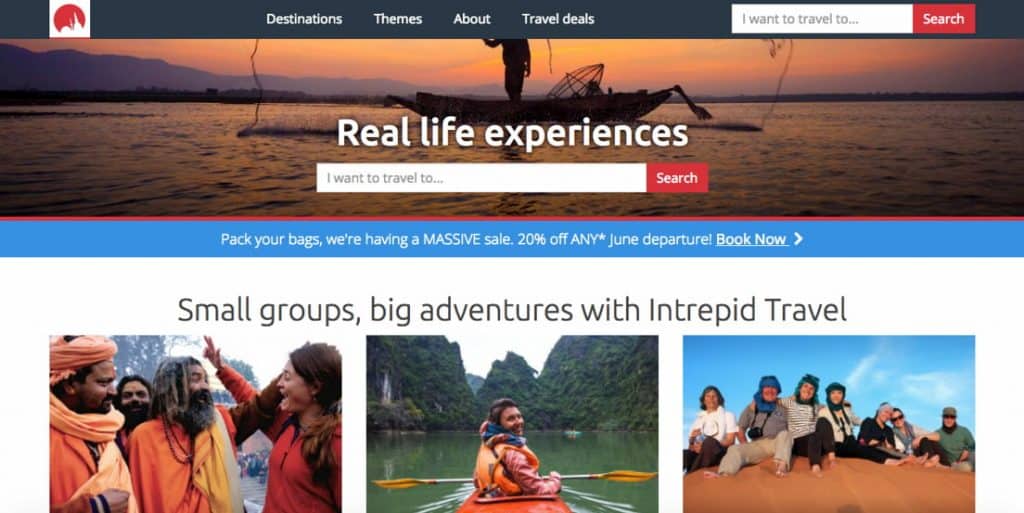
Intrepid travel – a global company that runs organized small group adventures with a local guide. Typically their tours are more about culture and adventure and traveling with a particular focus on local experiences.
Their tagline – is based on Option 4- Using the outcome their guests want to achieve on their tours.
(although they didn’t use Where but it works well without)
– These words are based on an insight – the focus that their guests want local experiences, and community based activities. They don’t want to do things that are touristy – but going to places, and doing things with local guides and local services.
Intrepid also uses a secondary line – like Step 4 – They clarify what they do – because their tagline doesn’t say it all.
Example #2 Jo & So
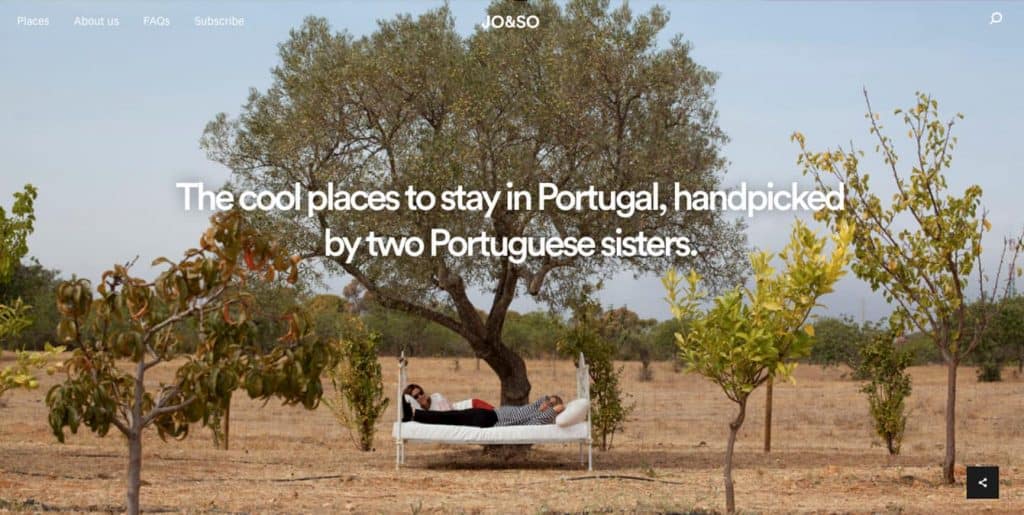
This is an example of an accommodation business that recommends hotels and stays in Portugal.
They used Option 3 with one difference.
Outcome- Cool places to stay Need/Insight: handpicked= carefully selected accommodation Vehicle – 2 Portuguese sisters – who curate the tours and they are credible because they are from Portugal
I like this tagline and it doesn’t need a secondary line because it answers – what they do and how they do it.
However, they could have talked more directly to their audience and written something like:
Cool places to stay in Portugal handpicked by locals especially for you.
Example #3 Impulse Travel – Tour Company
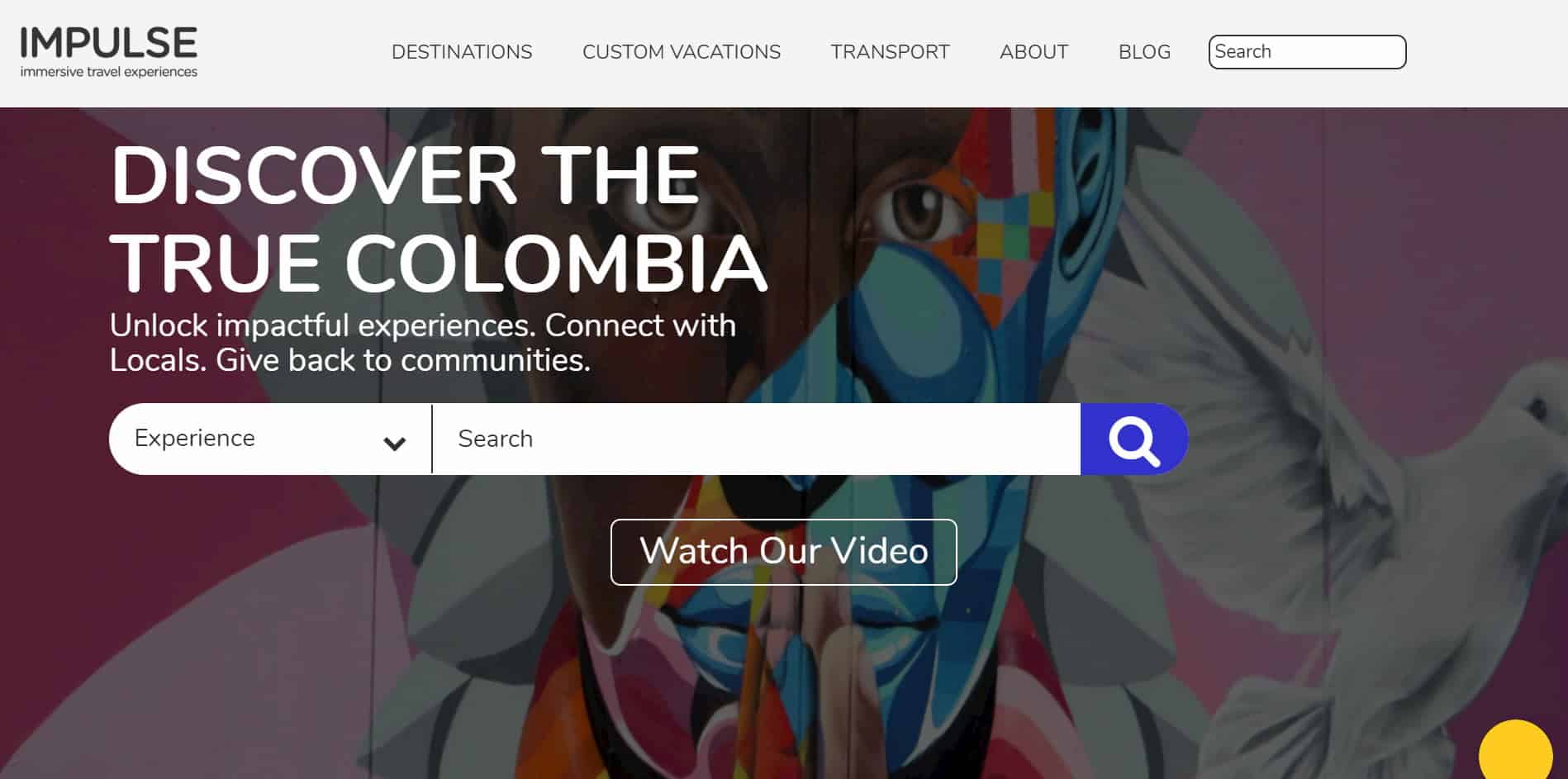
Impulse travel- A tour company in Colombia – used the outcome method option 4 for their tourism tagline. The insight here is that Colombia is plagued with a lot of stereotypes and misconceptions – and they want to dispel this.
Then they added Step 4 as a subline – to describe in 3 phrases what they do. Instead of one line, you can use 3 lines. Listing in 3’s can be an effective written approach – but any more phrases is too much information, and not as strong and brief as the subline is intended to do.
Example #4 Moscatello Family Resort
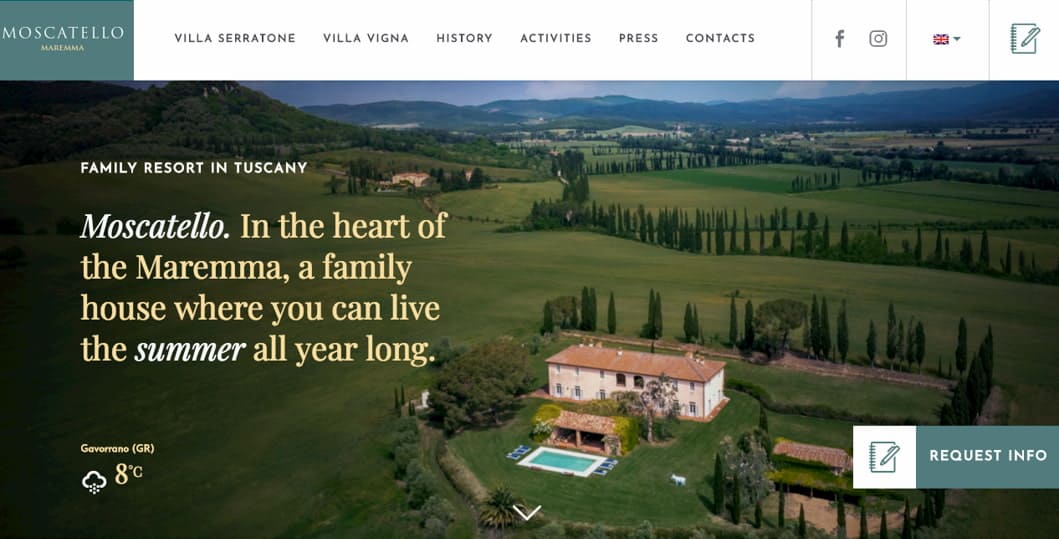
This vacation home uses Option 3 – Vehicle- family vacation house in Maremma, Italy Outcome: Where you can live the summer all year long. This is a good use of copy, I would recommend it to be two sentences. For example:
The family house where you can live the summer all year long
Moscatello. In the heart of Maremma, Italy.
Example #5 Taste of Toulouse Food Tour
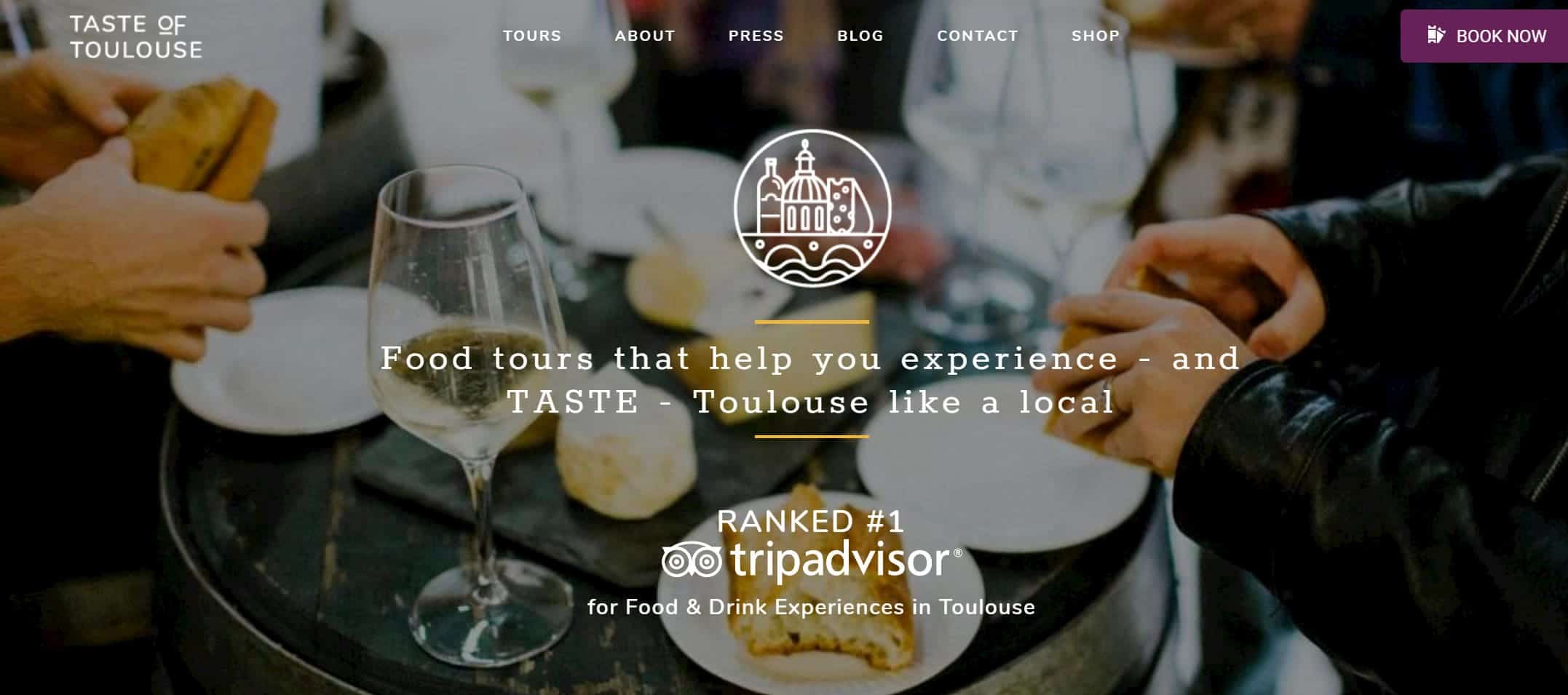
Taste of Toulouse -Food and drink tours in Toulouse, France.
In this example this business used a combination of Option 1 and 5. Helping you (target audience) Outcome: experience and taste food like a local – going to places and eating what and where locals do. This line is a little longer because it also includes “what” they do and where they do it.
This is an effective example – of focusing directly on your audience in your copy, and what outcome they are looking for.
Now do you feel equipped to tackle building your own tourism taglines? Words that will help you convince your ideal target guest to keep on reading on? Let us know in the comments. And if you are looking for more copy tips to improve your marketing you can find them here. Check out our resources page for more website and marketing tips.
